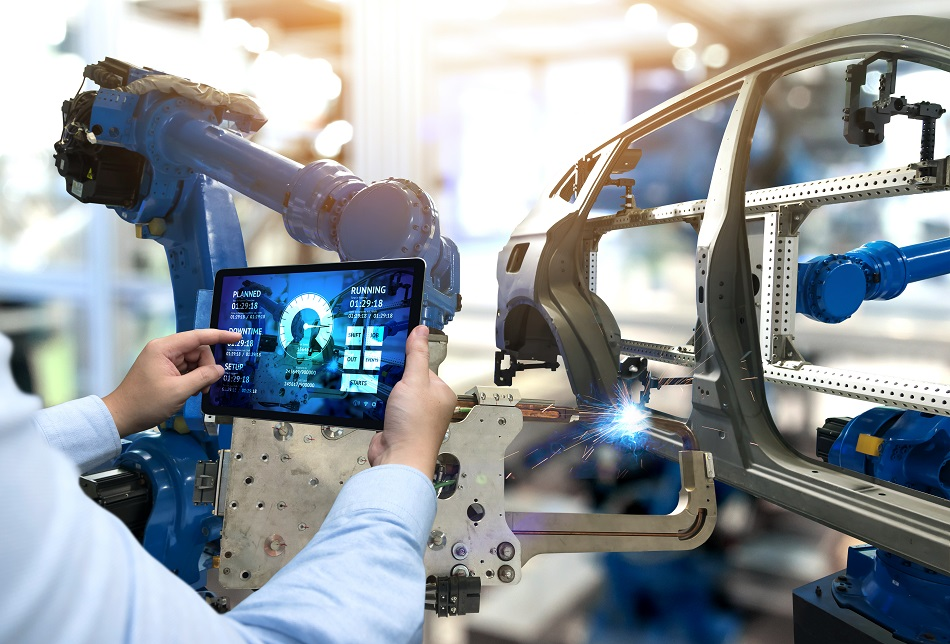
Image Credit: Zapp2Photo/Shutterstock.com
In 2018, Dyson announced that they were committing $4.7 billion to develop an electric car before deciding just a year later that it wasn’t such a good idea.
There have been rumors since 2014 that Apple was working on its electric vehicle, codenamed “Project Titan”. Apple continues to file automotive-related patents but its efforts now appear focused on infotainment and autonomous driving software rather than the daunting task of building an EV from the ground up.
Even the most ambitious tech-driven automotive venture to date, from Google, has no plans to manufacture vehicles. Google’s self-driving car project was spun out of its parent company Alphabet to a subsidiary called Waymo in 2016. But their self-driving technology is embedded in third-party vehicles rather than in Waymo-manufactured cars.
So, imagine the surprise when Sony unveiled its EV concept at the Consumer Electronics Show (CES) 2020 expo in Las Vegas. Without any previous announcements of their intentions in this area, Sony proved that they can step beyond their usual realm of communication and infotainment and demonstrate their take on a fully electric autonomous car. Whilst also proving that they are very good at keeping secrets.
Presenting the vehicle they are calling the Vision-S at Sony’s stage at the event Sony CEO Kenichiro Yoshida said: “This prototype embodies our contribution to the future of mobility and combines a variety of Sony technology.”
What the Vision-S is
The Vision-S prototype incorporates Sony’s imaging and sensing technologies, as well as on-board software, regulated using Sony’s AI, telecommunication and cloud technologies to allow the continuous update and evolution of its features.
A total of 33 sensors, including CMOS image sensors and ToF (Time-of-Flight) sensors, are embedded within the vehicle to detect and recognize people and objects inside and outside the car, plus provide highly advanced driving support. However, it’s the description of the onboard entertainment that indicates the thinking behind Sony’s entry into the “mobility sector”. Once one is “relieved from car operations”, there are just so many opportunities for the entertainment of passengers.
It seems that Sony sees this vehicle as a testbed for its mobile entertainment technology. According to their press release “Sony’s “360 Reality Audio” provides a deep and immersive audio experience through speakers built into each seat to encapsulate passengers in sound. The front seats face a panoramic screen on which rich and diverse content can be enjoyed through an intuitive user interface.
Sony will continue to combine its advanced technologies to deliver greater safety and reliability, while also striving to inspire new emotion through revolutionary in-car entertainment experiences.”
A Different Approach to Future Mobility
Interestingly, at no time during his presentation did Mr. Yoshida talk about the things that most potential purchasers of electric vehicles might be interested in such as range or performance.
However, in the specification, it outlined that the Vision-S has two 268-bhp (200-kilowatt) electric motors enabling a 0 to 62 mph (100 km/h) in a brisk 4.8 seconds and a competitive top speed of 149 mph (240 km/h). He was not clear that Sony was about to get into the business of motor manufacture when he said, “This prototype embodies our contribution to the future of mobility,” which makes their effort in putting together such a capable and well-designed vehicle that falls in-between the look of a Tesla and a Lexus all the more impressive. What the vehicle does showcase, are the things that Sony does well and what they are already doing for several motor manufacturers.
The Vision-S sensors include radar, lidar, and cameras, but Sony says its real success is ensuring that the information collected from them produces clean data with fewer errors. Sony’s LiDAR will not only be affordable but also compact due to the development of a lower-cost silicon chip which enables long distances to be measured with high accuracy. You might not be aware that Sony is fairly experienced in this area and that its CMOS sensors from its cameras are already used in the Toyota Corolla and Lexus NX.
The Canadian manufacturer Magna, who supplies Mercedes, Ford, GM and (given the styling of the Vision S it’s no surprise) also supplies Tesla, is responsible for the EV platform. Other Sony partners, including Qualcomm, Continental, and Nvidia were involved.
To be clear the Vision-S is a concept development platform for Sony, but given the experience of their partners, particularly Magna, who seem to be the “go-to” manufacturer for many leading automotive brands, it's just possible you might see a Sony badged vehicle on your drive sometime soon.
Sources and Further Reading
Disclaimer: The views expressed here are those of the author expressed in their private capacity and do not necessarily represent the views of AZoM.com Limited T/A AZoNetwork the owner and operator of this website. This disclaimer forms part of the Terms and conditions of use of this website.